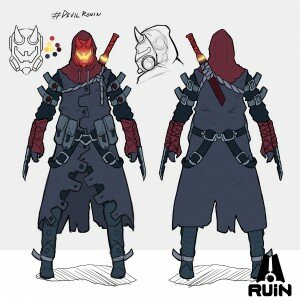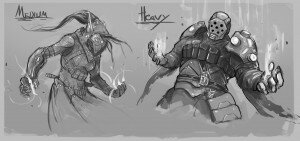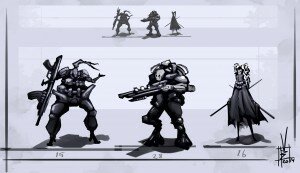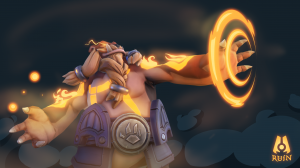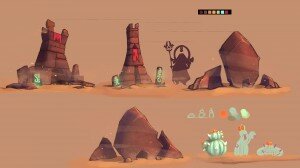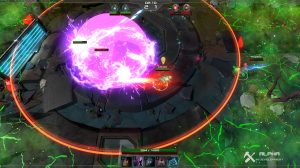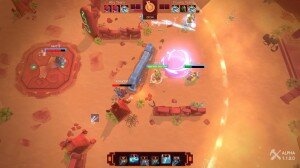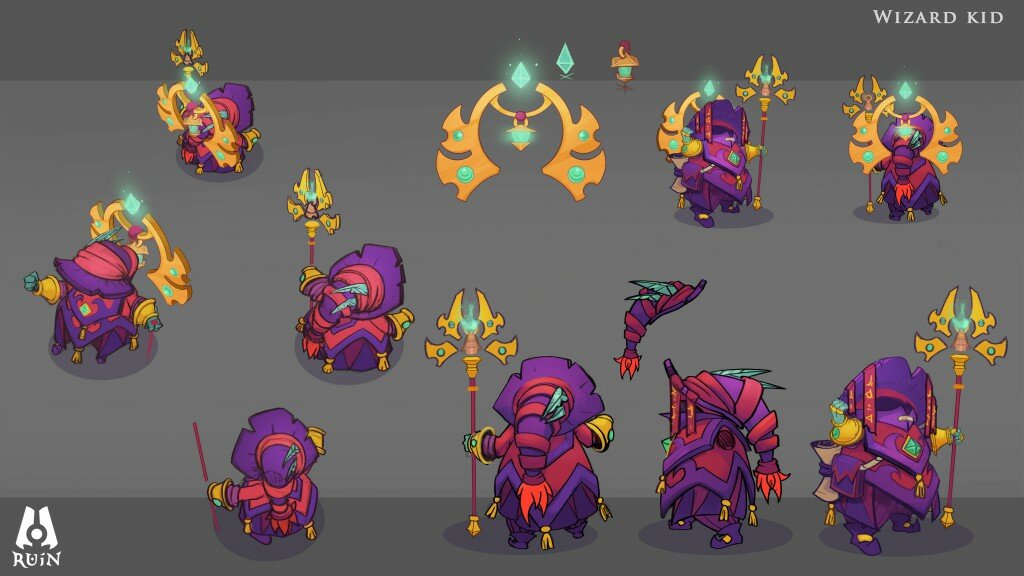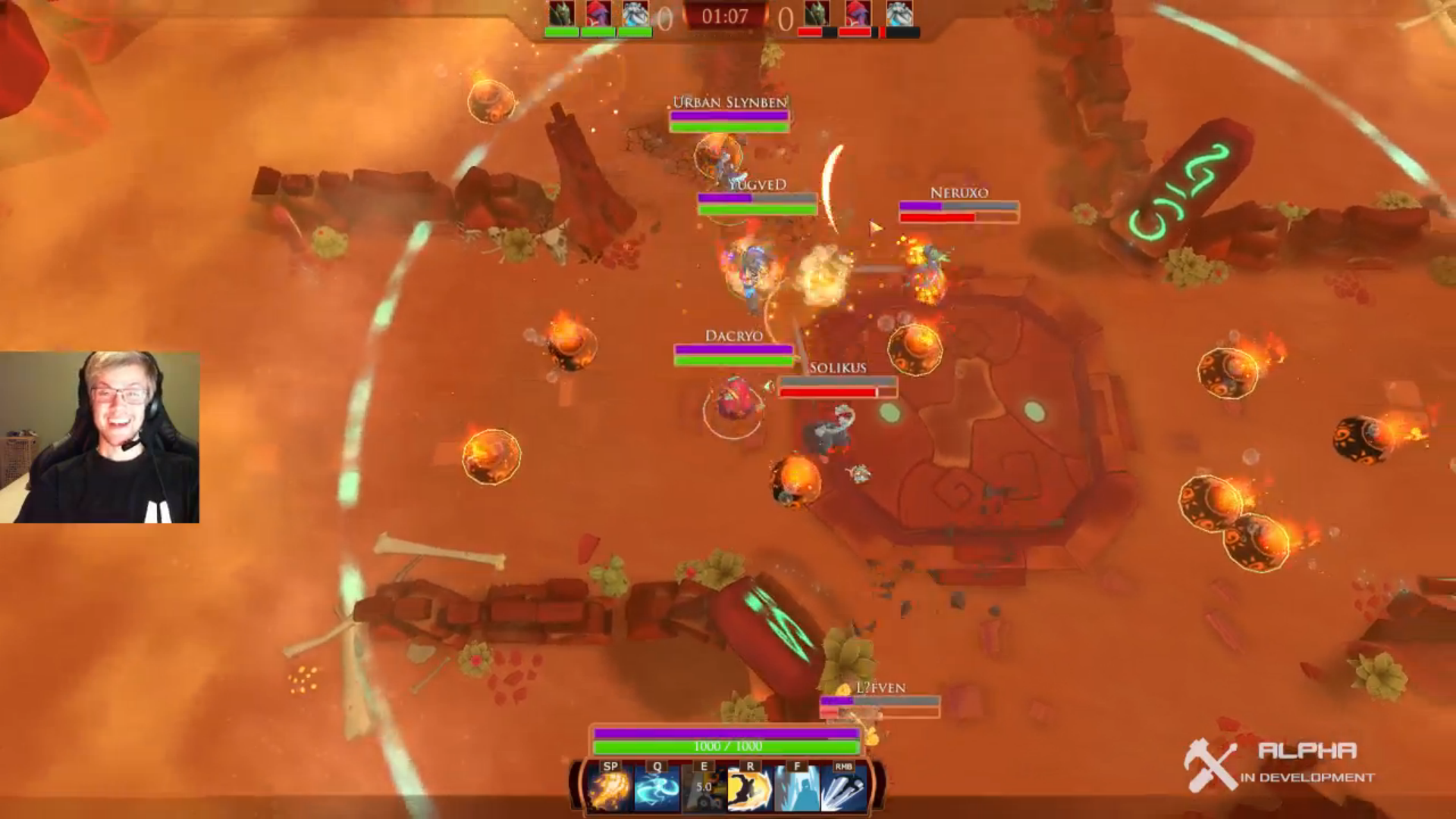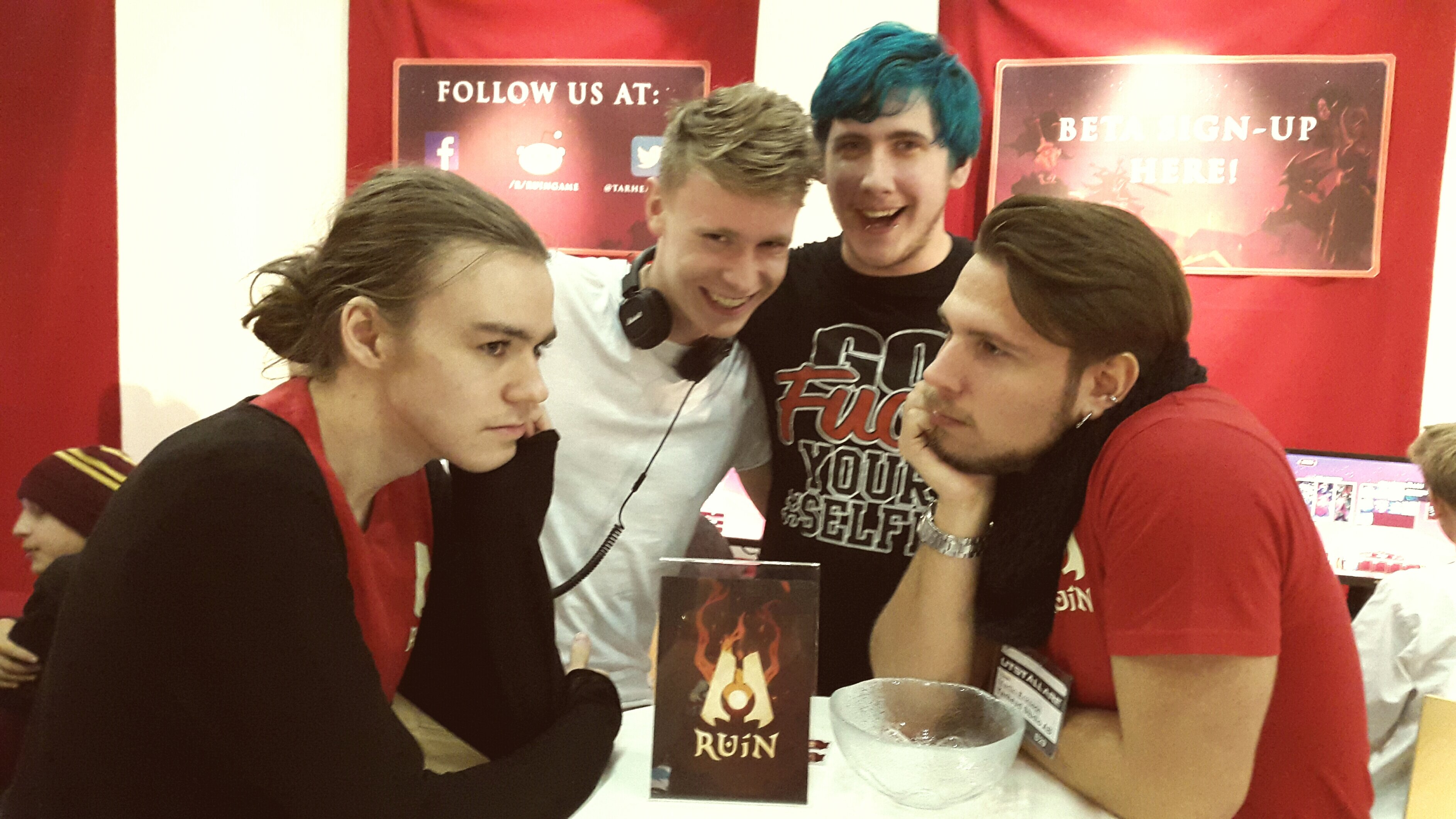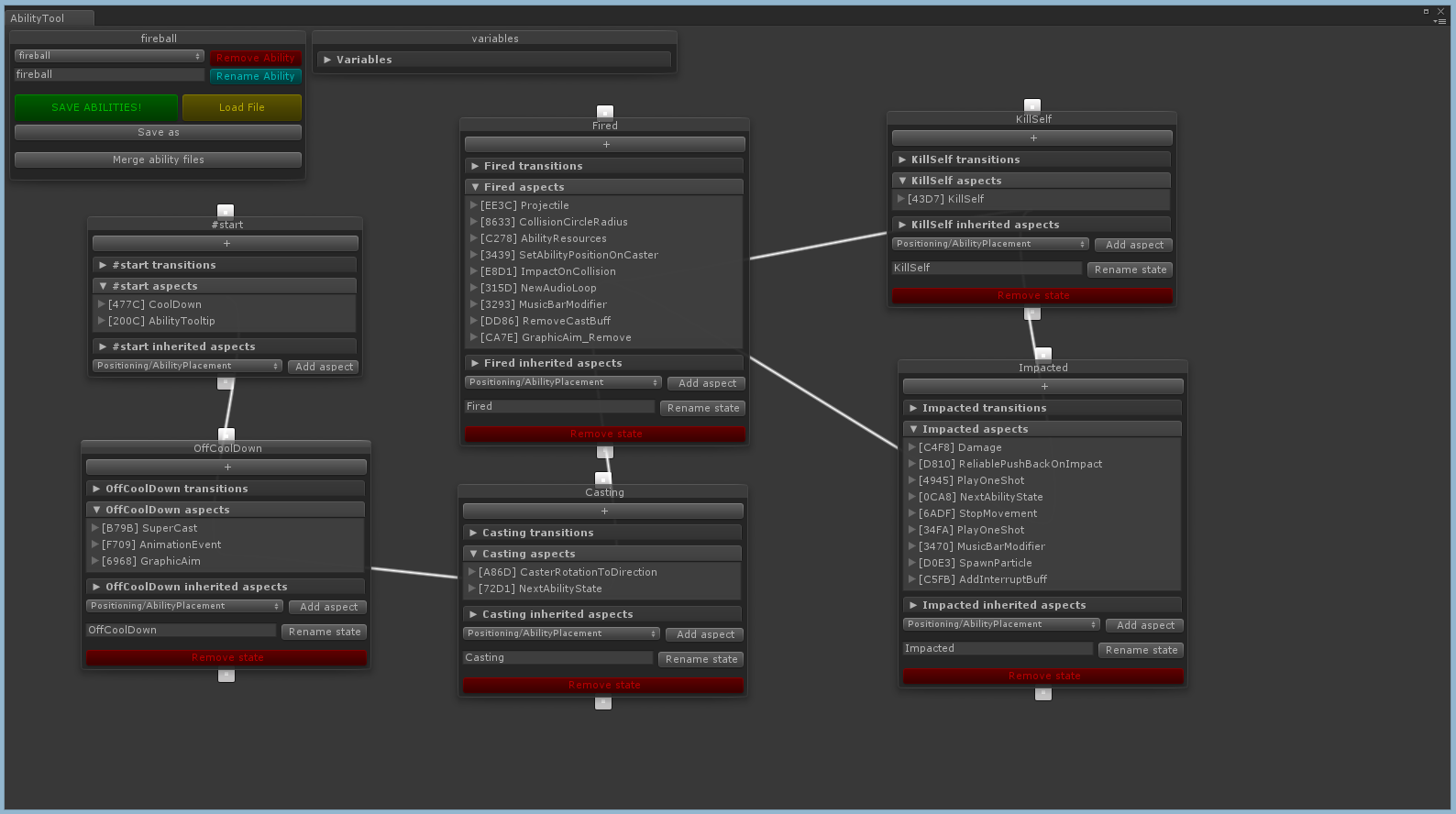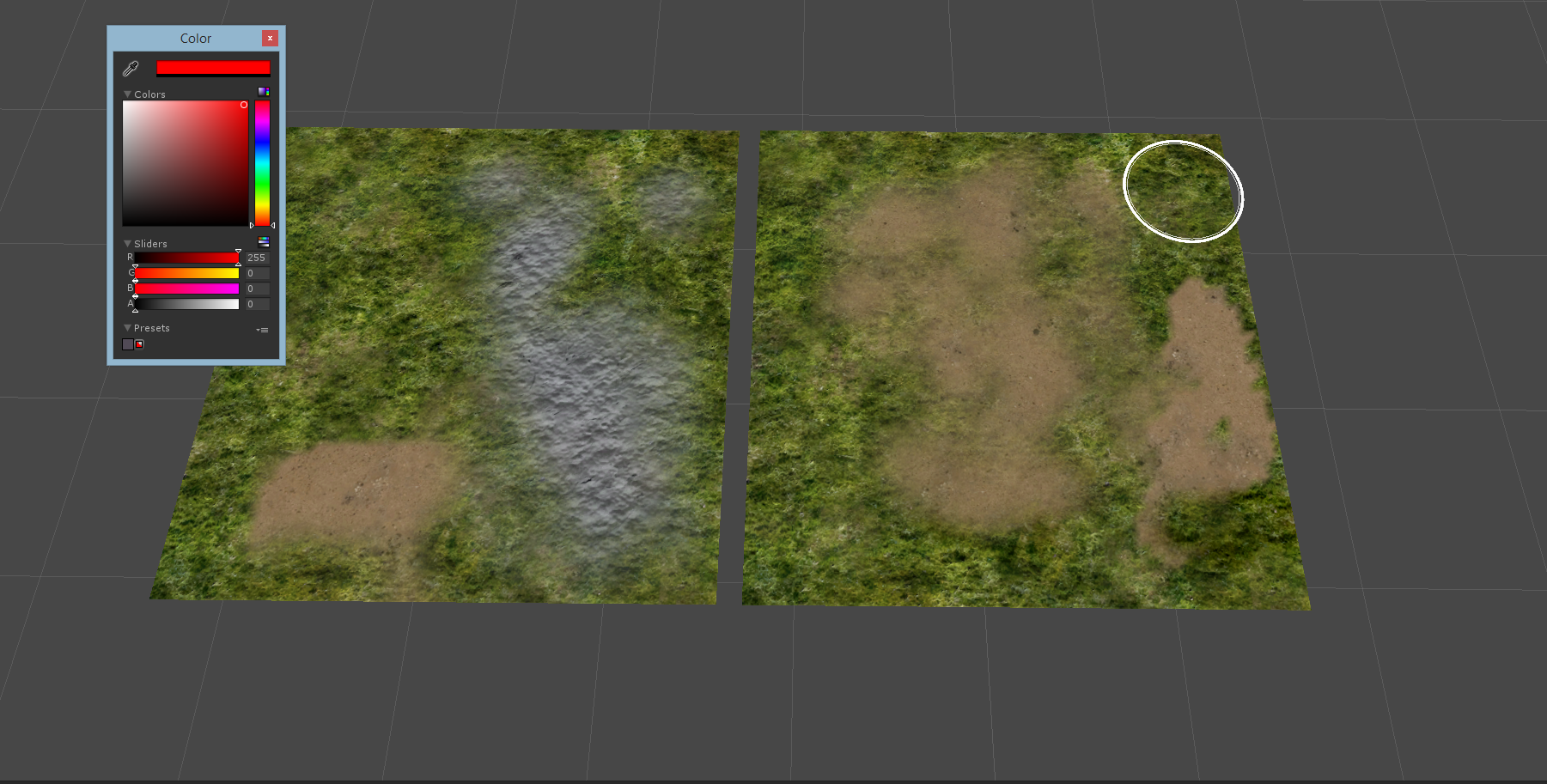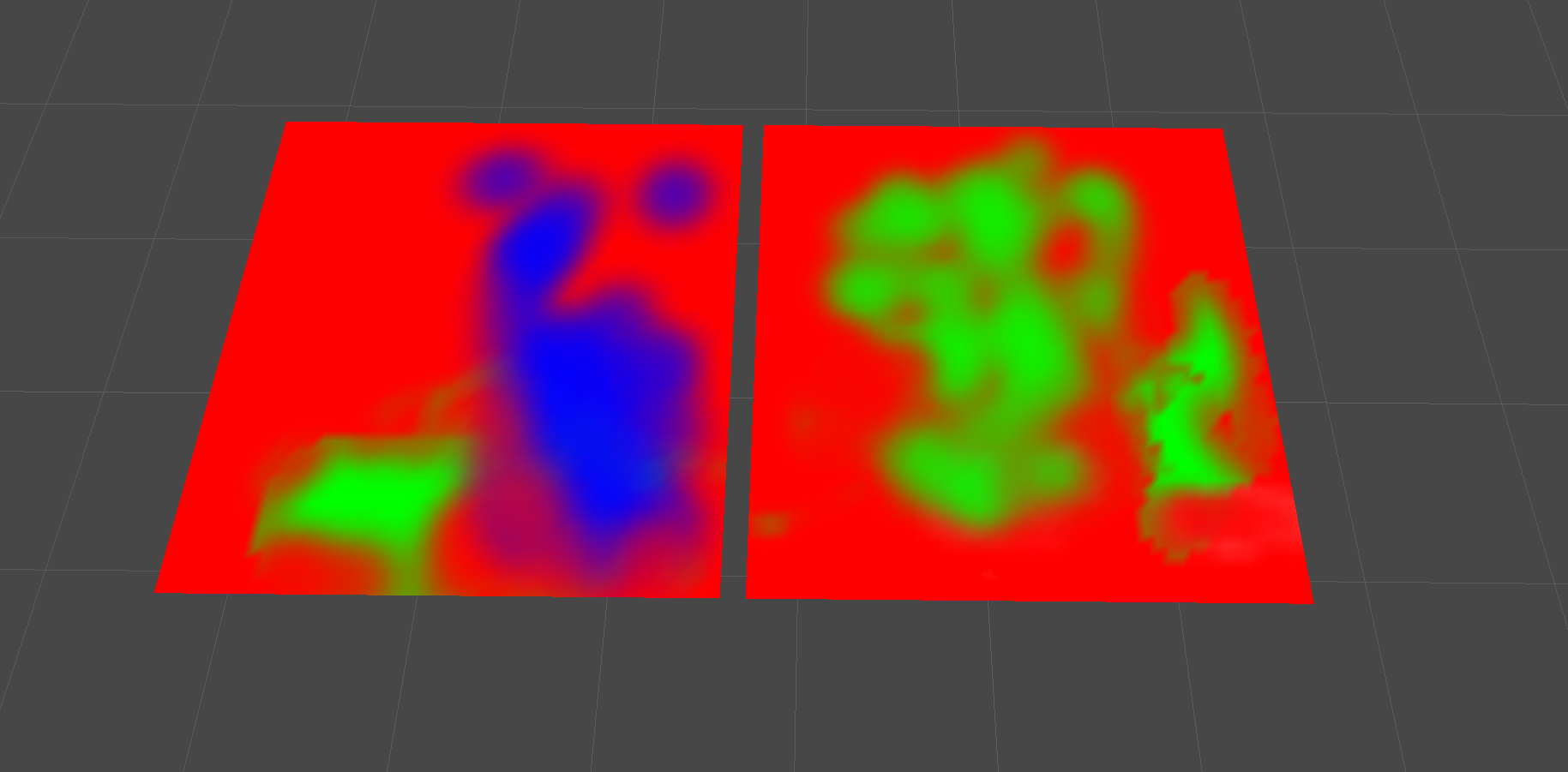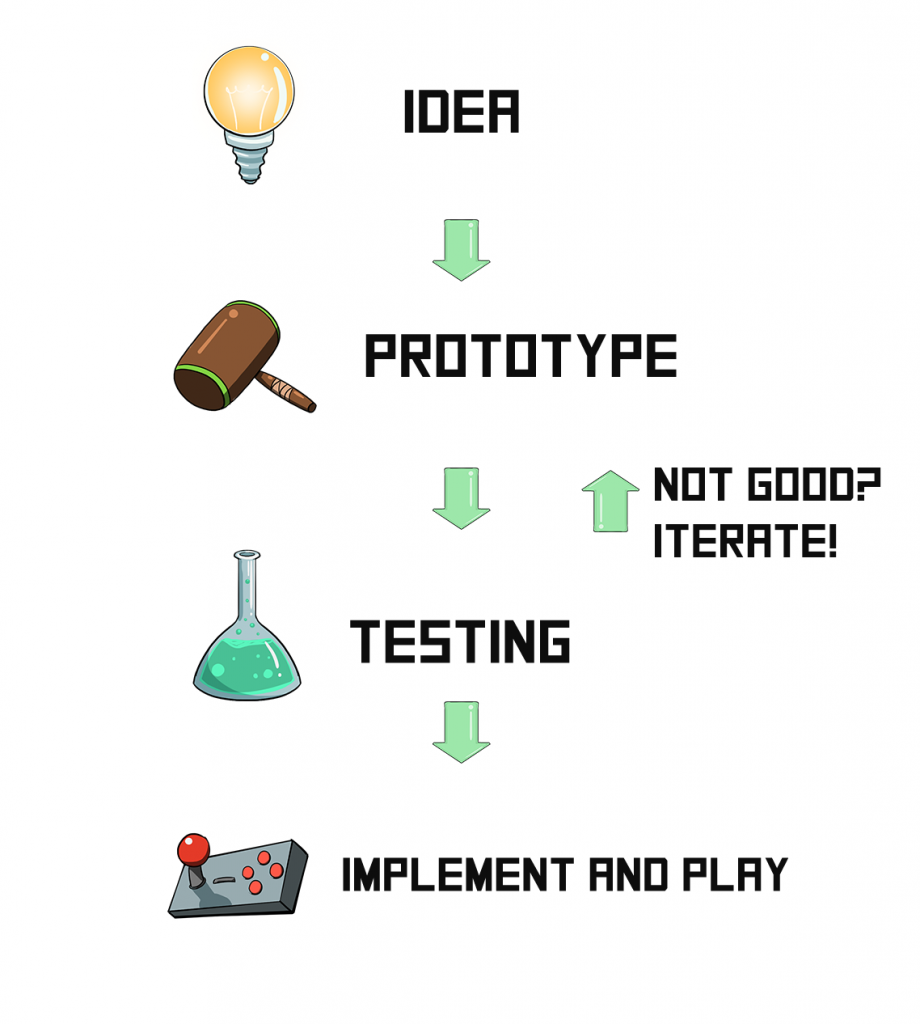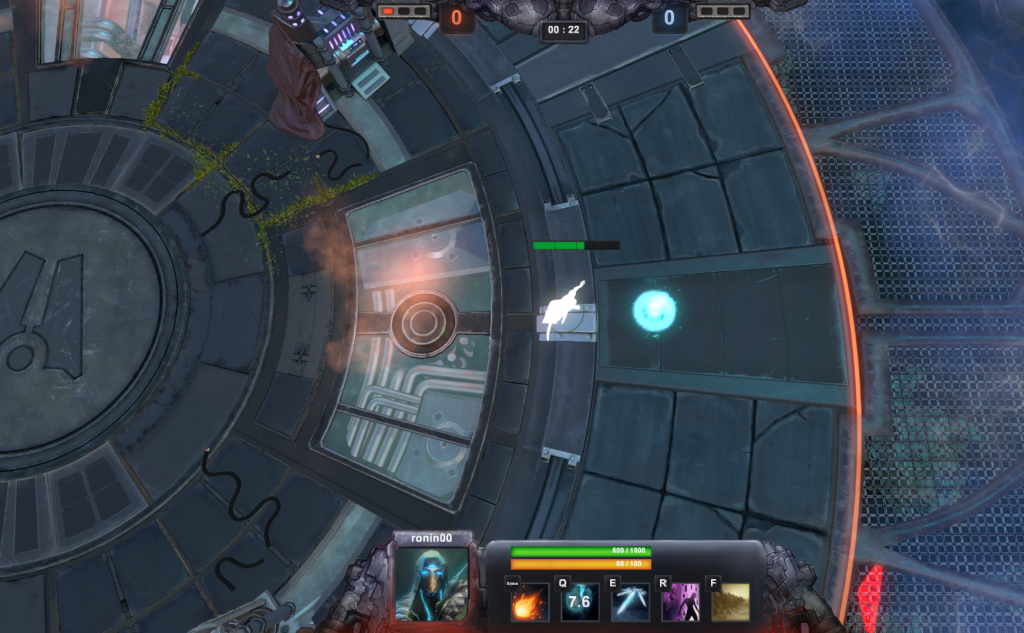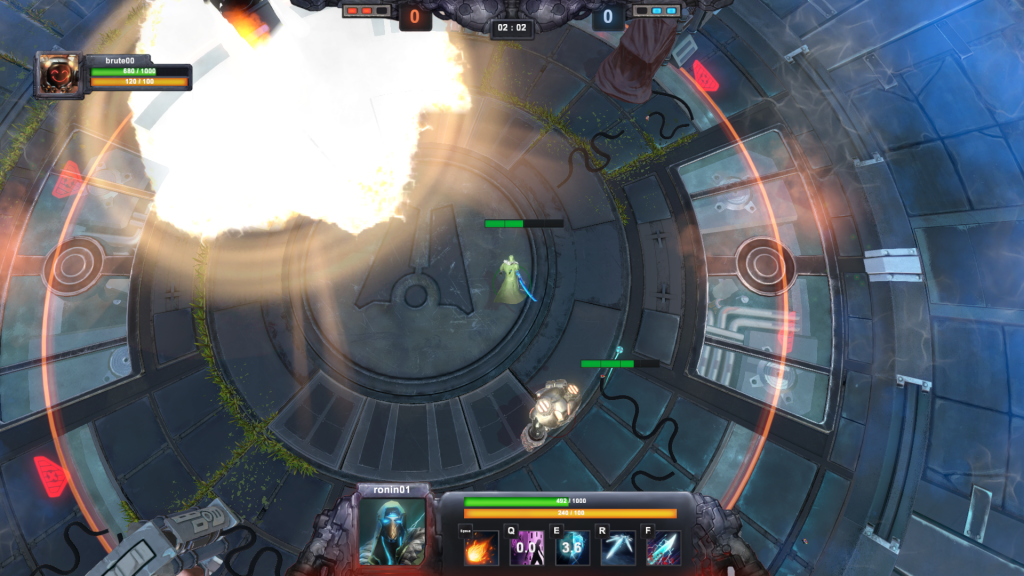A couple of weeks ago we displayed RUiN for the first time at Comic Con Gamex Stockholm, one of the largest exhibitions in Sweden for games. In the following post I will share with you some thoughts on different aspects of showing off your games at exhibitions and similar events as well as give you a glimpse of our experience.
To make it easier for you, and since I’m kind of CDO, I have broken it down into three categories of equal importance: Preparations, Execution and the Aftermath.
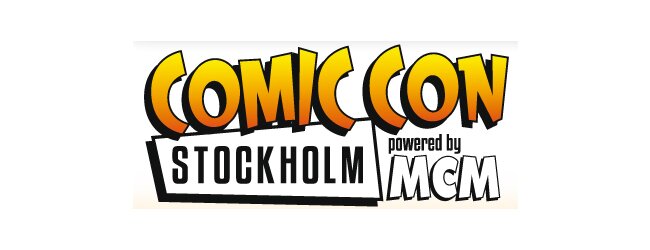
Preparations
The first thing you need to do when preparing for an exhibition is to figure out what your goal for the exhibition is. Do you want to reach out to the press? Gain visibility? Meet publishers/investors? Something else? Preferably, you should have at least an idea of your goal even before deciding to go, since attending these sort of things can be quite the investment and different exhibitions/tradeshows/conventions are good or bad in different aspects.
Since we’re still in an early stage of development of RUiN and since Comic Con Gamex attendees are mostly gamers – the audience – our primary goal was to gain visibility and get a sense for what the players think of our game and if we’re heading in the right direction. As a secondary goal we were also hoping for some press coverage but weren’t counting on it, since there generally aren’t a lot of journalists at this specific exhibition and the few that are mostly cover the “big” names.
When you’ve made the decision to go to an exhibition and have your goal set you need to start looking into three things.
- What part of my game do I want to show off and will I have it ready in time?
- What can I do to gain the attention of the people I’m there for?
- Practical solutions (hardware, traveling, accommodation, etc.)
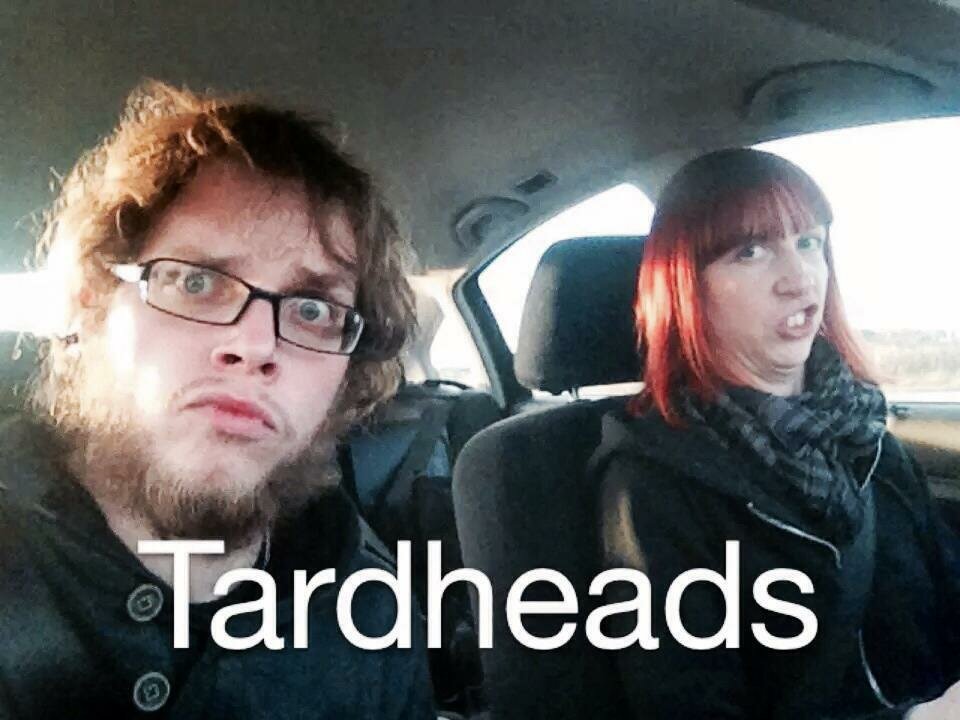
Roadtrippin’
The first of these things – what you are going to show – of course relates to the goal we talked about earlier. Are you trying to gain visibility and create awareness of your game with the general public? Then you probably want a playable build of your game and maybe a gameplay video that shows off the core features of your game. Are you going to have business meetings with publishers and investors? Then you probably want at least a trailer of the game and a pitch, for example in the form of a short power point presentation.
You also have to make sure that you will have it finished by the time you’re leaving for the exhibition. The key to this is effective deadlines, I would recommend it to be at least a week before the event takes place, and not aiming too high. Players will generally not spend more than five minutes actually playing your game so instead of trying to finish the whole game, focus on a small part of it that conveys the core features and does it really well.
As for the second of these things, what you should do to gain the right attention, it can get a bit tricky. You should make it a habit to do some standard stuff before exhibitions; once again, dependent on what your goal is. If you want to meet up with publishers and investors, you should look into which ones are attending and make contact with the interesting ones beforehand. Oftentimes their schedule is already loaded when they arrive so they won’t have any time for you otherwise. This is also true for journalists, whom you should also have prepared a press kit for when making contact. If you have no idea what a press kit is, check this tool out. It’s free!
As for showing your game to the masses, you have to start thinking about how you can make your booth or space attractive. Especially to your target audience. To get your thinking going I will list a few basic ideas:
- You could have some form of a competition and a large sign saying something along the lines of “Hey, you can win these awesome prizes over here!” People LOVE competitions. For example, on the second day of Comic Con Gamex we, due to lacking as much attention as we wanted, made a big sign saying “Competition: Beat the developers and secure your beta access”. We basically doubled the number of people coming by our booth!
- You could decorate your booth based on the theme of your game.
- You could have activities in your booth relating to your game. For example at GDC last year, visitors at the “Papers, Please”-booth were able to stamp sign up forms just like you do in the game. Simple but effective!
- Give aways. People LOVE free stuff, maybe even more than competitions. You could give away free t-shirts and other merchandise if you have the funds, but it doesn’t have to be expensive. Simple things like free candy will get you a long way!
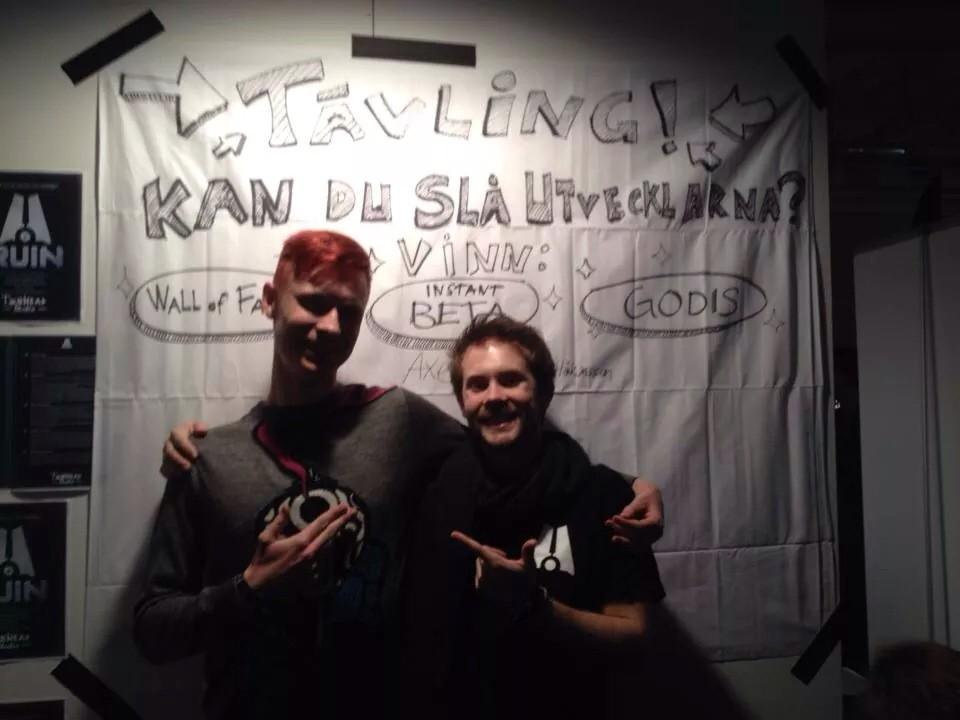
The sign says “Competition! Can you beat the developers?”. Worked like a charm!
Last, but not least, you of course have to look into practical solutions for your trip. Where will you stay during the event? How will you get there? What hardware do you need for your booth? Other stuff for your booth to make it more attractive, maybe a roll up? It might sound obvious but damn it if there isn’t always someone panicking over having forgotten something important when you get there. Start making a list of these things early on and get to it, it will only get more expensive the closer you get to the event.
Execution
So, you’ve arrived at the exhibition, you’ve prepared your booth or material and it’s time to start. What do you do?
Pitching the game to publishers and investors
When I was preparing to pitch RUiN for the first time in front of a publisher I was honestly scared shitless, especially the last few minutes leading up to it. We were at the GameConnection in San Francisco, sort of a speed dating event between developers, publishers and other game related services. We had loads of meetings over the course of three days and they had scheduled our first meeting to be with Microsoft. Of all the companies we had scheduled meetings with during the course of those three days we of course had to start with one of the giants.
However, five seconds into that first pitch I realized something that I think is important to keep in mind. The guy at the other side of the table is just another dude trying to do his job. A job that is, most likely, dependent on him finding games with a lot of potential that is worth investing in. Him going home from GameConnection without a bunch of good material would probably be as bad as for us to go back home without having made at least a few parties interested in our game.
Humanizing the publisher makes it a lot easier to make a good pitch. If you don’t, your presentation will almost definitely be affected. You will sound stiff, sort of like a computer that has memorized a script, and you will be completely thrown off when they cut you off with questions. And they will have questions.
Other than that there are a few nice guidelines for pitching your game:
- Make sure you know the company at the other side of the table and what their portfolios look like. What sort of games have they published before? What are their core values and the idea behind their business? This kind of information can usually be found on their respective websites, so it shouldn’t be too much of a problem.
- Make sure that you know every aspect of your game, including business model, core features and target audience, and that you can motivate those aspects.
- Keep it short. Often, you won’t have that much time and, as I’ve mentioned, there will be a lot of questions. Try to aim for a five minute presentation focusing on all the important aspects of your game and don’t go into detail on any minor features.
- Learn to think like a salesmen. Meetings with publishers and investors always differ. Some are avid gamers that love to talk about your games, others don’t care at all and just want to know how they can make money on your product. Try to keep an eye on their reaction to different subjects and focus on the ones that seem to pique their interest.
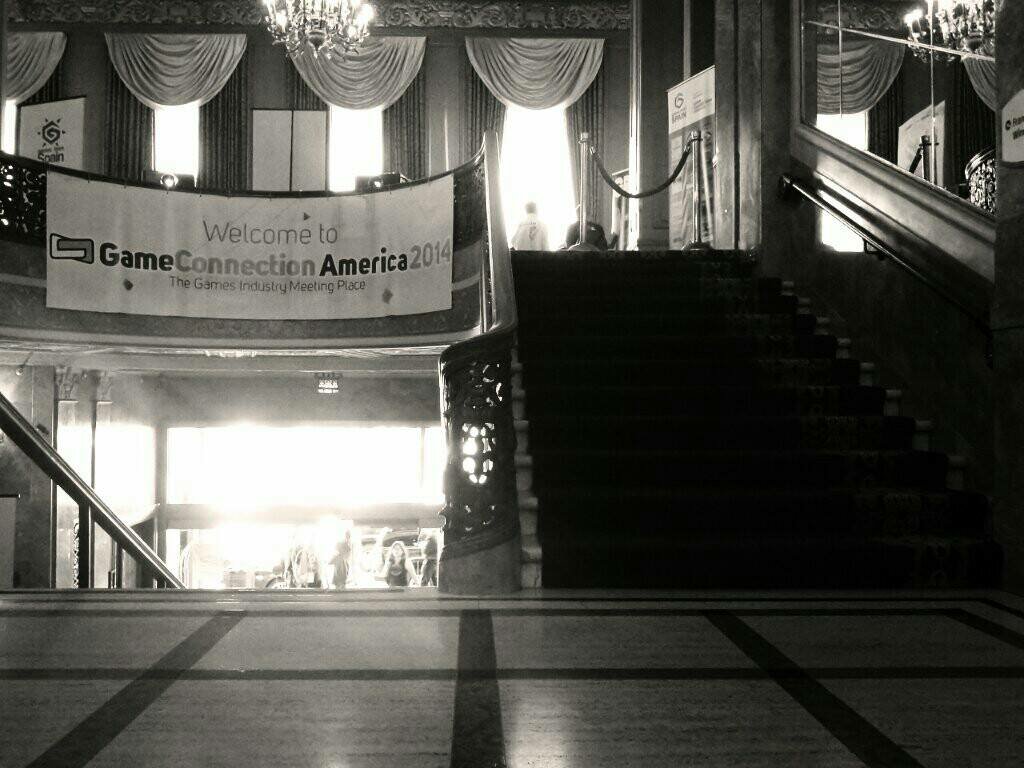
Talking to the press
The first thing you have to realize about the press is that they are just as interested in writing about you as you are in them doing it. Much like how the job of the dude in my first publisher meeting was dependent on him bringing back a bunch of promising games, the job of the girl from PC Gamer is dependent on her writing a bunch of great articles before the deadline of their next issue. You contacting them about your new game can be a lifesaver, or at least save them some time.
That being said, they won’t just take any random game sent their way and print an article about it. So here’s a few things worth keeping in mind when talking to journalists:
- Don’t waste time on the wrong press. You will save loads of time on filtering out the sites and magazines that don’t really care about your kind of game. Do you have a first person puzzle game? Well than why the f*** would you waste time talking to a journalist from RPGWatch.com?
- Stay updated. When you’ve filtered out the press that you shouldn’t waste time on, make sure to stay updated on the latest trends in the press that you do care about. Use it to your advantage!
- Talking to a journalist differs from talking to publishers and investors. Don’t talk about how the game will make you loads of money, talk about what makes your gameplay awesome. Core features, community service, etc. Most of all, be enthusiastic about your game and make them believe as much in what you’re saying as you do, or at least should be doing.
- Build a relationship. Make friends and treat the press well, especially the ones that wrote good things about you. Follow up with them, give exclusives and make their time with you worthwhile.
- Pay attention not only to the big all-encompassing sites but also to smaller, more specialized sites. First of all, getting an article about your game on a site that focuses on games like yours can get you as much attention as getting an article at say IGN, where the article about the latest World of Warcraft mega-expansion headline next to your unknown game will pique the majority of the reader’s interest. Secondly, a lot of the journalists at the smaller sites further or later wind up working for the big names and if you’ve already built a relationship with them at that point you will have a much easier time getting the attention you’re so desperately seeking.
I realize that a lot of this might sound either abstract or obvious but that’s the way it is. If you feel uncomfortable in these kinds of situations, speaking publicly and with the press, there are a lot of tools and courses on the web that might just be the help you need.
Talking to the players
This is by far the most mentally exhausting of the three. Most likely, you’re used to talking about games in general as well as your own game and it’s pretty much the same as what you should be saying to the press, so I won’t go into detail about that. Instead, I will give you a few motivational tips that might just be what makes you survive that final day of PAX or E3.
Talking to the public, the ones that in the end will be deciding the fate of your game, can be the most rewarding part of developing games. At the same time, it can also be the most painful one. To tackle this issue, remember the following things:
- Your game won’t suit everyone. Some random guy is saying that the gameplay is boring isn’t the end of the world. Neither is it in any way indicative of your game sucking. Be objective and think of what could have caused him to say so instead. What kind of games does he like? Did he experience any issues when playing? Is everyone calling it boring or is it just this guy?
- It’s totally okay to take breaks, you don’t have to be there the whole time. If you’re smart you will make a schedule with the rest of the team attending so that there is someone at your booth at all times.
- Let the game speak for itself. You don’t have to cover every aspect of it before someone gets to play. Oftentimes, the one you’re speaking to will lose interest if they don’t get to try it out. That’s most likely what they’re there for.
On top of that you shouldn’t just let them leave your booth and forget about you. As I mentioned before, giveaways (preferably with your logo on them) is a great way to make them remember you. On top of that you can also have newsletter signups, links to your social media pages, and so on and so forth so that they can find a way to stay updated on the development of your game.
However, most people won’t just sign up for a newsletter even if they’re interested, so try to think of a way to solve that issue. For example, during Gamex, we had Beta-signups for RUiN (everyone wants to sign up for a beta) and in the signup form we had a checkbox for receiving our newsletter. 95% of the people signing up accepted the newsletter as well!
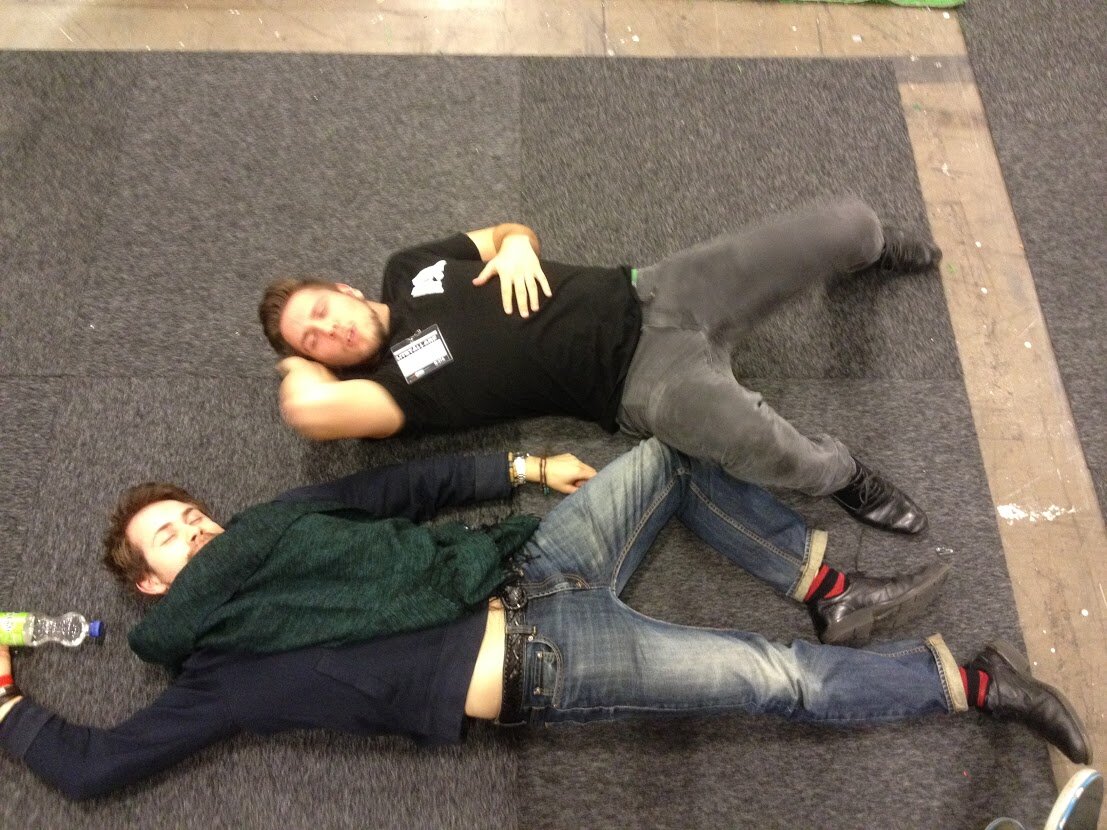
To give you a sense of how you’ll feel at the end of the last day
The Aftermath
So, you survived the convention/tradeshow and you’re back home, at last. Finally, you’ll get some time to rest…
Just kidding, this is not the time to rest. Not even close. What you’re going to do next is to use the momentum you’ve created. If you don’t, all the work you’ve put in this far will have been for naught.
Basically, what you want to do now is follow up on your actions during the event. If you had a bunch of meetings with publishers and alike, you (hopefully) promised to send them some kind of information. You might have promised them a summary of the game and the trailer for them to pitch the game internally. Maybe you even said you’d send them the prototype or vertical slice that you’ve created. Even if you didn’t promise them anything, you should still get in touch to make sure they don’t forget you exist. You’re still allowed to send them material even if you spoke nothing of such trivial matters!
In other words, you now want to have some things ready. Material like trailers, prototypes or promo art you most likely already have and brought with you to the conference. However, you might not have a pitch summary or presentation ready for them. Don’t worry, they shouldn’t take that long to make considering you’ve already pitched the game.
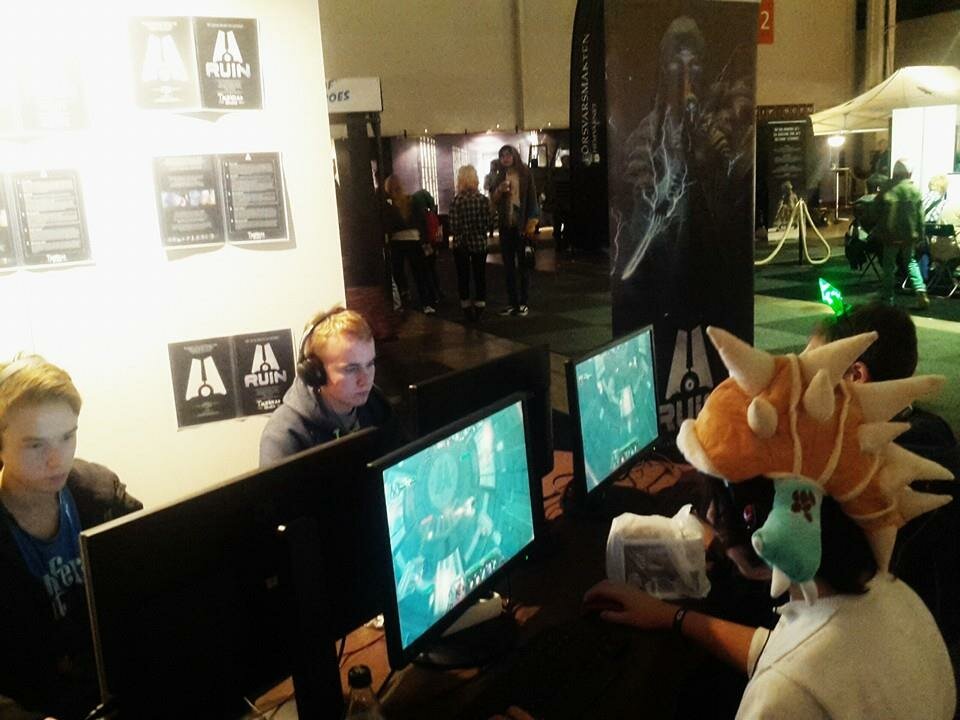
Yes, this is a filler pic.
What you want to do is outline the core features of the game, how you’re planning to monetize on the game and a short summary of why they should choose your studio. It shouldn’t be more than one or two pages long. Just make sure that you focus on the important aspects; they will most likely not care about that awesome custom particle effects tool you built for unity.
Concerning the press, this is the time to send out that press kit if you did not do it beforehand. Whatever the case, you should still give them a heads up and thank them for their time. If you did do a bunch of interviews you must also start keeping track on the web, if you did talk to people from analogue magazines you will want to keep track of these magazines as well, to see if you’re mentioned anywhere. If you are, start analyzing what they wrote. You will probably be devastated about how they misinterpreted everything. Well, stop your whining and think about what you did wrong during the interview and how you can fix that until next time instead. Everyone has bad interviews, it won’t RUiN (see what I did there?) your game as long as you do better next time.
Last, but definitely not least, if you talked to loads of potential players during the event you have some following up to do as well. With any luck, you probably have a lot of new followers in social media, newsletter signups or some other form of attention now. Make sure to follow up on your promises and keep them updated. Start working that twitter account like your hands are on fire and write the best god damn newsletter the world has ever seen. Plan your marketing and try to give them some major updates at least once a month. A new trailer, some new previously unknown information about the game like a new, previously undisclosed alien race or some gameplay footage, to give you an example. It’s good to have these things planned out even before the event so that you don’t tell the players of every little detail of your game. As I’ve said before, focus on the core features of your game. Once they’re hooked, they will care about the other stuff as well.
I think I will abruptly end it here. I’ve written far too much already and I’m almost a week past deadline. I’m impressed that you made it through all those lines of text and hope you’ve at least gotten a few ideas on what to do the next time you head out and show off your game.
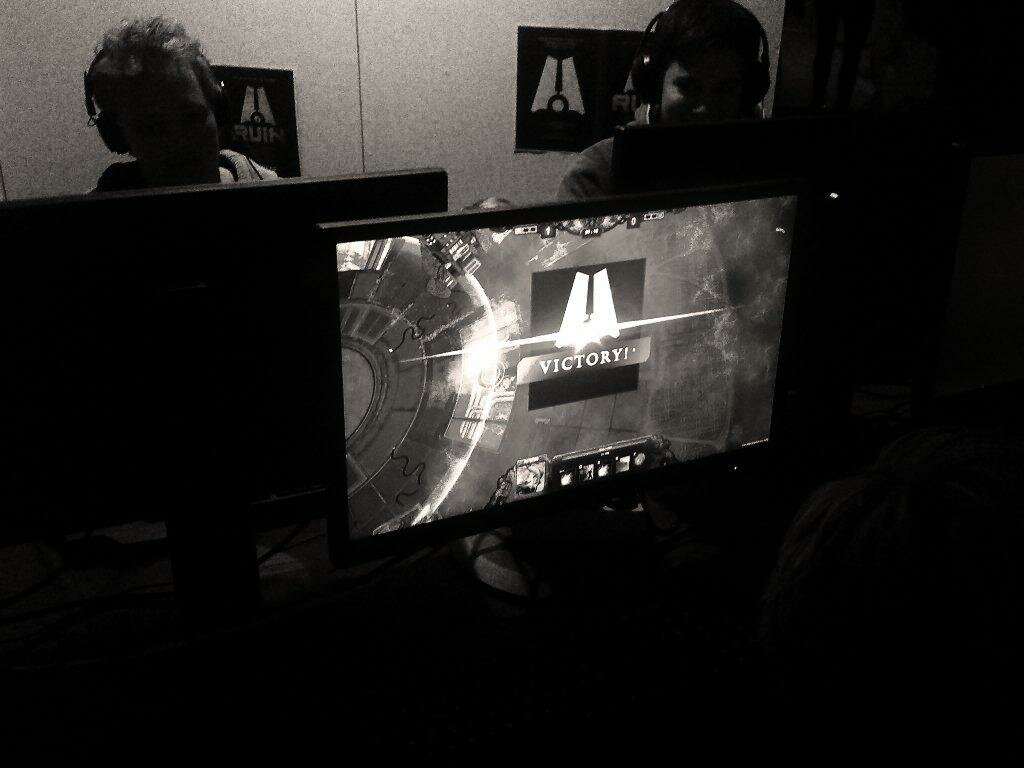
You made it!
If you have any questions or think I’m full of shit, please do share these thoughts in the comment section below. Back rubbing is totally welcome as well.
And remember to sign up for our Beta (and newsletter).
For more reading on this subject and PR/marketing in general, you should read Pixel Prospectors Big List Of Indie Game Marketing. It’s awesome and has helped me a lot!
Partypic can be found below, sort of.
Emil Helge
Project Manager & Lead Designer
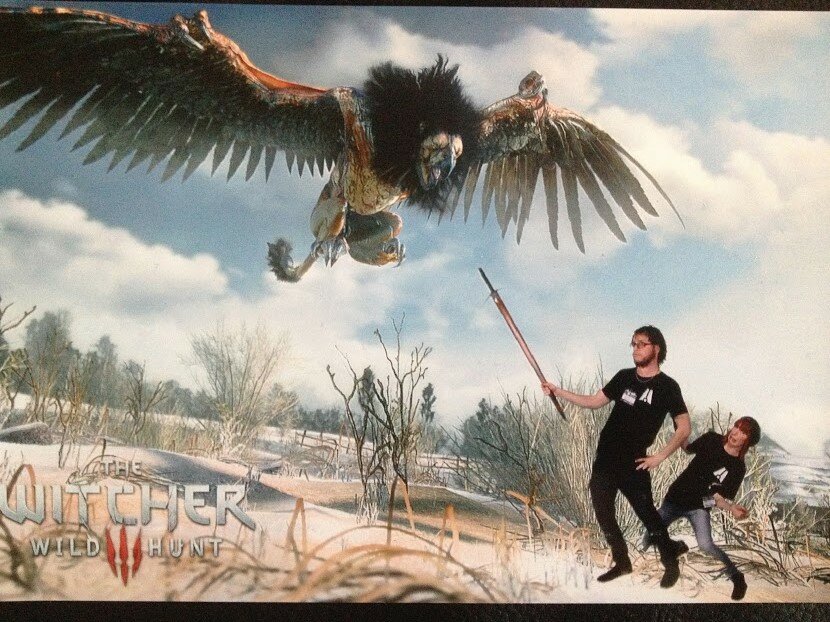
Yes, that’s me fighting a gryphonlikebirdthingy and, of course, protecting the helpless lady. Damn it, stereotypes.




